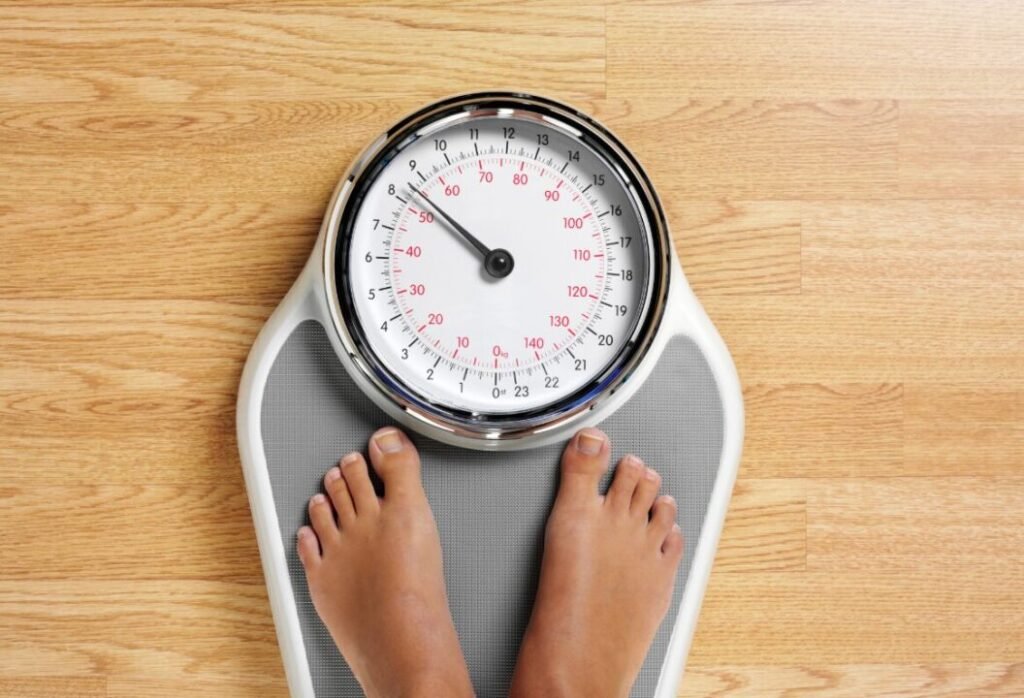The Military Diet is a weight loss method, focused on low-calorie intake over three targeted days, followed by a four-day period of regular eating.
Its rigid meal structure, incorporating foods such as grapefruit, tuna and broccoli, aims to stimulate rapid fat burning.
While the origins of this diet are unclear, despite its name, it bears no official military endorsement. Although it promises significant short-term weight loss, it’s not considered a sustainable long-term solution.
As you further explore this topic, you’ll reveal the precise rules, meal plans, and expert opinions surrounding this controversial diet strategy.

Understanding the Military Diet
The Military Diet, often dubbed as the ‘3-day diet,’ is a weight loss regime that promises rapid results, yet the principles and practices behind it require detailed examination to guarantee a thorough understanding.
This diet plan involves a low-calorie intake for three days, followed by four days of regular eating.
It is designed to trigger a metabolic response that facilitates quick fat burning, consequently leading to weight loss.
The diet is highly structured, leaving little room for deviation. It prescribes specific food items and portions for each meal, which must be strictly adhered to for maximum effect.
It is essential to note, however, that while this diet may provide swift results, it should not be considered a long-term solution for weight management.
Origins of the Military Diet
Despite its name, the Military Diet does not have origins rooted in any branch of the armed forces, sparking much debate and intrigue about its true genesis. The diet’s exact origin remains obscure, yet it gained popularity through the internet around 2007.
Some believe it was developed by nutritionists; others suggest it was a fad diet created for quick weight loss. The name ‘Military Diet’ may have been attributed due to the strict, regimented plan that mimics military discipline, although no official military organization has endorsed it.
Its appeal lies in its promise of significant weight loss in a short period, a concept appealing to our fast-paced, result-oriented society.
The Military Diet, despite its mysterious origins, continues to pique interest for its extreme yet straightforward approach.
Basic Principles and Rules
While the origin of the Military Diet remains a matter of conjecture, its basic principles and rules are clear and well-defined.
The diet focuses on low-calorie intake, rigid meal plans, and intermittent fasting.
This diet operates on the principle of calorie restriction, demanding strict adherence to a meal plan that comprises specific food items.
The diet spans over a week, with the first three days being the most restrictive. The subsequent four days, however, allow a bit more flexibility but still require a calorie-restricted diet. The rules are precise and leave no room for deviation.
Intermittent fasting is also a significant part of this diet, acting as a catalyst to the low calorie intake, potentially accelerating the process of weight loss.
The Three-Day Meal Plan
Starting the Military Diet involves a stringent three-day meal plan, designed with specific foods and portion sizes to maximize calorie restriction.
The carefully orchestrated meal plan aims to provide approximately 1,400, 1,200, and 1,100 calories for the first, second, and third day respectively.
This dramatic reduction in caloric intake is intended to stimulate rapid weight loss, while still providing essential nutrients. The meals are simple, consisting of fruits, vegetables, lean proteins, and whole grains.
It’s vital to adhere to the plan strictly for the three days, with no additional food or snacks allowed outside the designated meals.
This rigorous regimen is not without challenges, but it offers the potential for significant weight loss results in a short period.
Foods to Eat and Avoid
In order to successfully follow the Military Diet, it is essential to understand which foods are permissible and which ones should be avoided.
The diet promotes consumption of lean protein, low-carb vegetables, and fruits. You’re advised to eat foods like grapefruit, tuna, eggs, toast, chicken, broccoli, carrots, bananas, and cottage cheese.
On the contrary, high-calorie foods, foods high in sugar and salt, and processed foods should be avoided.
This includes foods like chips, candy, pastries, fast food, and soda. In essence, the Military Diet is about eating whole, nutritious foods, while steering clear of unhealthy ones.
Below, we have broken down a suggested menu for the three most strict days of the Military diet.
Day 1
Breakfast:
- 1/2 Grapefruit
- 1 Slice of Toast
- 2 Tablespoons of Peanut Butter
- 1 Cup of Coffee or Tea
Lunch:
- 1/2 Cup of Tuna
- 1 Slice of Toast
- 1 Cup of Coffee or Tea
Dinner:
- 3 Ounces of any type of meat
- 1 Cup of Green Beans
- 1/2 Banana
- 1 Small Apple
- 1 Cup of Vanilla Ice Cream
Day 2
Breakfast:
- 1 Egg
- 1 Slice of Toast
- 1/2 Banana
Lunch:
- 1 Cup of Cottage Cheese
- 1 Hard Boiled Egg
- 5 Saltine Crackers
Dinner:
- 2 Hot Dogs (without bun)
- 1 Cup of Broccoli
- 1/2 Cup of Carrots
- 1/2 Banana
- 1/2 Cup of Vanilla Ice Cream
Day 3
Breakfast:
- 5 Saltine Crackers
- 1 Slice of Cheddar Cheese
- 1 Small Apple
Lunch:
- 1 Hard-Boiled Egg
- 1 Slice of Toast
Dinner:
- 1 Cup of Tuna
- 1/2 Banana
- 1 Cup of Vanilla Ice Cream
Remember, it’s important to consult with a healthcare provider before starting any new diet plan, especially one as restrictive as the Military Diet.

Potential Benefits of the Diet
Having understood the fundamental dietary guidelines of the Military Diet, we now turn our attention to its potential benefits.
This diet plan is designed to promote rapid weight loss, with some adherents reporting shedding up to 10 pounds in a week. This can be attributed to its low-calorie regimen, which encourages the body to burn stored fat for energy.
The Military Diet also fosters discipline and dietary control, providing a structured meal plan that can help individuals curb overeating and unhealthy snacking. Additionally, it incorporates whole foods known for their nutritional benefits including lean proteins, fruits, and vegetables.
Therefore, despite its restrictive nature, the Military Diet may offer notable advantages for those seeking a quick and structured approach to weight loss.
Possible Side Effects and Risks
While the Military Diet may provide rapid weight loss and other potential benefits, it is important to take into account the possible side effects and risks associated with this strict regimen.
The diet is characterized by a low-calorie intake that may lead to nutritional deficiencies if not carefully managed. This could result in fatigue, dizziness, and impaired cognitive function.
Since it promotes rapid weight loss, there is a risk of muscle loss, and regaining the weight is a common occurrence once the diet ends, leading to a potential yo-yo dieting effect.
Additionally, the strict nature of the diet may pose a challenge to adherence, potentially causing stress and frustration.
As with any diet, considering risks and side effects is paramount.
Expert Opinions on the Diet
Various health and nutrition experts have provided their insights and perspectives regarding the Military Diet, offering a diverse range of opinions on its effectiveness and safety.
Some experts commend the diet for its structured approach and potential for quick weight loss, citing its low-calorie content as a key factor.
However, others express concerns about its sustainability and nutritional completeness, arguing that it may lead to nutrient deficiencies and rebound weight gain.
Critics also question the diet’s reliance on processed foods, which can have negative health implications.
Tips for Maximizing Weight Loss
Given the diverse opinions on the Military Diet’s effectiveness, it is important to explore practical strategies that can enhance weight loss outcomes for those who choose to follow this regimen.
First and foremost, adherence to the diet’s three-day plan is essential. This plan, low in calories and high in protein, promotes weight loss by creating a calorie deficit. Enhancing physical activity, while maintaining the diet, can also accelerate outcomes.
Second, hydration is critical. Drinking ample water aids metabolism and may suppress hunger.
Lastly, sleep quality impacts weight loss. Proper rest can regulate hormones affecting appetite and metabolism.
As a result, combining the Military Diet with these lifestyle modifications can potentially optimize the weight loss results.
Alternatives to the Military Diet
Despite the possible benefits of the Military Diet, there are numerous alternative dietary plans that could offer comparable or even superior weight loss outcomes.
One such plan is the Mediterranean Diet, lauded for its emphasis on whole foods and heart-healthy fats.
Or the DASH diet, designed to combat high blood pressure, which also promotes weight loss.
For those with a penchant for structure, Weight Watchers provides a points-based system that promotes portion control and balanced eating.
Meanwhile, the Keto Diet focuses on high-fat and low-carb consumption to trigger rapid weight loss.
Ultimately, though, the best diet is one that aligns with an individual’s lifestyle, preferences, and health goals, making sustainable weight loss a feasible achievement.

Conclusion
To conclude, the military diet, despite its contentious origin and stringent regimen, offers a potential rapid weight loss solution. However, the diet’s restrictive nature and potential adverse effects warrant caution.
While some experts highlight its efficacy, it is not universally endorsed. Maximizing weight loss involves adherence to the diet’s principles and seeking healthier alternatives.
Further research is needed to fully understand the diet’s long-term effects and viability as a sustainable weight loss strategy.

